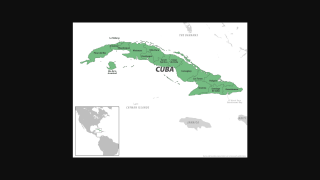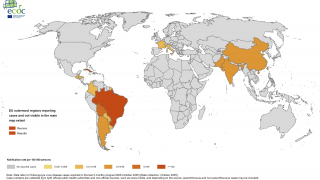Europe's Chikungunya Cases Come From India and the Caribbean Islands
With international travel accelerating in 2025, a recent study offers an overview of Chikungunya infections in mainland Europe over the past two decades. This research article provides this mosquito-transmitted disease's epidemiological characteristics, diversity, and clinical manifestations.
The Chikungunya virus (CHIKV) was first recognized during an outbreak in southern Tanzania in 1952. It is primarily transmitted to humans through the bite of infected female mosquitoes, most commonly Ae. albopictus and Ae. Aegypti.
Although not listed as a hemorrhagic fever virus, the Chikungunya virus (CHIKV) is often misdiagnosed with more well-known diseases, such as dengue or yellow fever.
From 2007 to 2023, about 4,730 Chikungunya outbreaks were reported in 22 European countries, predominantly affecting middle-aged females. These showed a seasonal pattern with peaks mainly associated with summer vacation.
The United Kingdom had the highest number of cases (21.9%), followed by France (19.6%), Germany (14.5%), and Italy (13.6%).
This study published by Qian Liu, Hong Shen, Li Gu, Hui Yuan, and Wentao Zhu in PLOS Neglected Tropical Diseases (19(3): e0012904) on March 7, 2025, revealed that the majority of Chikungunya infections were travel-related.
Among the total number of travel-related cases (n=2836),. Most cases originated from India (11.7%), the Dominican Republic (9.0%), Guadeloupe (8.7%), and Thailand (7.8%).
In 2024, Chikungunya outbreaks were confirmed in India's Maharashtra and Telangana states.
This study noted that before the first autochthonous (local) cases of CHIKV were reported in mainland Europe in 2007, a significant number of CHIKV cases occurred between March 2005 and June 2006 in the French overseas territories, which continue today.
For example, as of March 9, 2025, France's La Reunion is reporting an unusual spike in CHIKV cases.
And in the Americas, the Pan American Health Organization (PAHO) has reported 49,791 CHIIKV cases and two related fatalities this year. In 2024, 425,138 CHIKV cases and 236 associated fatalities were reported in the Americas.
Since Chikungunya has no specific treatment, the U.S. CDC's Advisory Committee on Immunization Practices recommends a safe and preventive vaccine for some travelers.
In 2025, the CDC reissued a Level 2 Travel Health Advisory to notify international travelers of this health risk: 'Vaccination against chikungunya is recommended for certain people traveling to a destination with a current chikungunya outbreak.'
The PAHO and the CDC recommend speaking with a travel vaccine expert at least one month before visiting outbreak areas to ensure you are protected from disease. As of March 2025, the U.S. FDA-approved IXCHIQ® vaccine was commercially available in the U.S., Asia, Canada, and Europe.
Our Trust Standards: Medical Advisory Committee
























